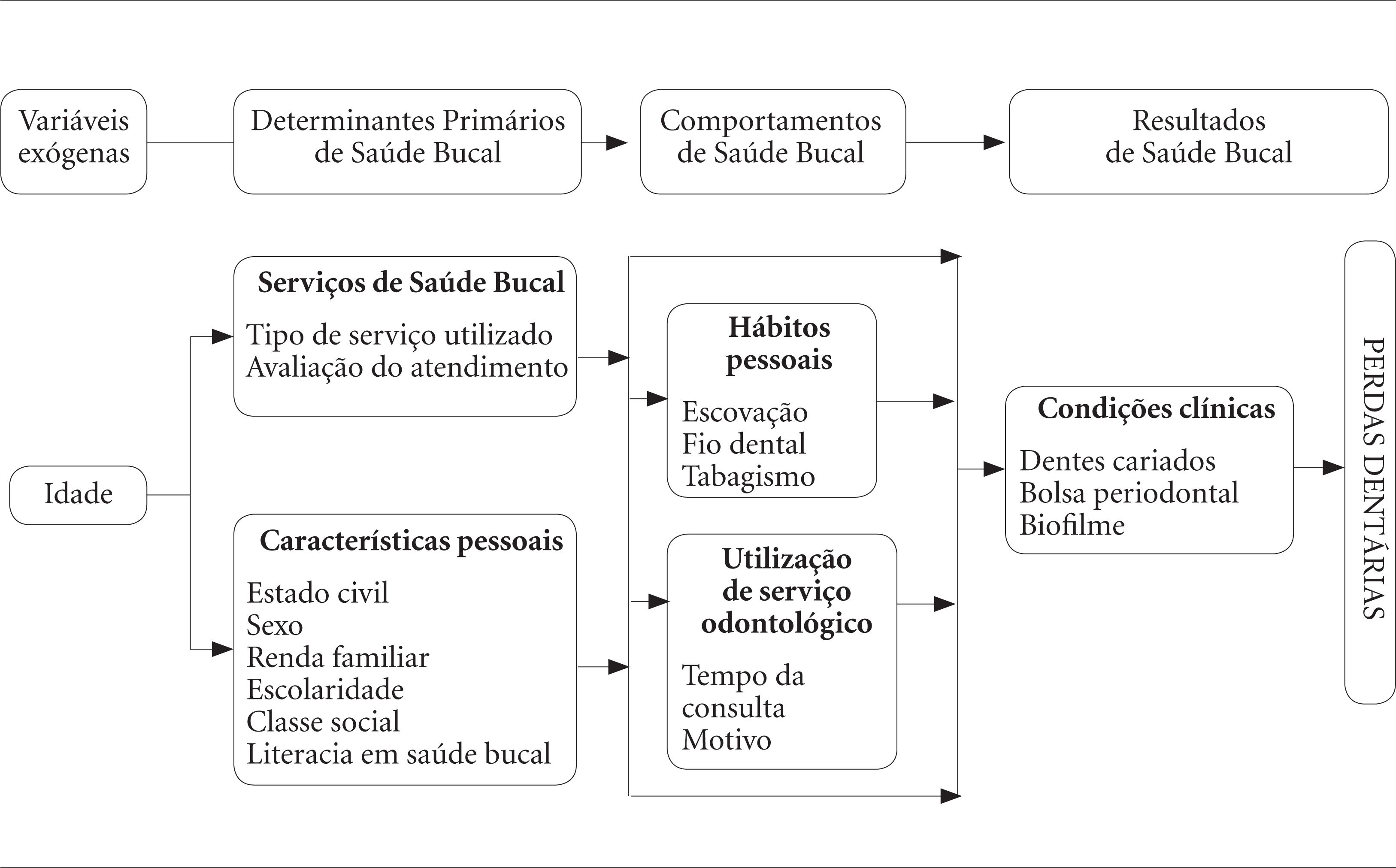Abstract
This study evaluated tooth loss and factors associated with a new classification, which considers not only the number of teeth lost, but also the number and position that they occupied in the mouth. In Piracicaba, State of São Paulo, Brazil, 248 adults (20–64 year-olds) were examined using a household probability sample. The oral examinations followed the WHO criteria for caries and periodontal disease. Socioeconomic, demographic and dental service use data were collected. The tooth loss outcome, based on tooth position and number of missing teeth, was analyzed by hierarchical multinomial logistic regression using a conceptual model. The mean number of missing teeth was 8.52 (DP = 9.24). For those who had lost up to 12 posterior teeth, age (PR = 1.1) and low social class (PR = 2.6) were significant; for those who lost up to 12 including anterior teeth, age (PR = 1.1) and clinical attachment loss>4mm (PR = 2.9); and for tooth loss in excess of 13 teeth, age (PR = 1.3), low social class (PR = 3.8), and visiting a dentist due to emergency (PR = 9.4) were significant. Age was associated with tooth loss. The classification made it possible to differentiate variables in accordance with position or the number of teeth lost.
Key words
Adults; Regression analysis; Epidemiological surveys; Tooth loss; Oral health

 Fonte: Aging, Ethnicity and Oral Health Outcomes, Andersen e Davidson
Fonte: Aging, Ethnicity and Oral Health Outcomes, Andersen e Davidson